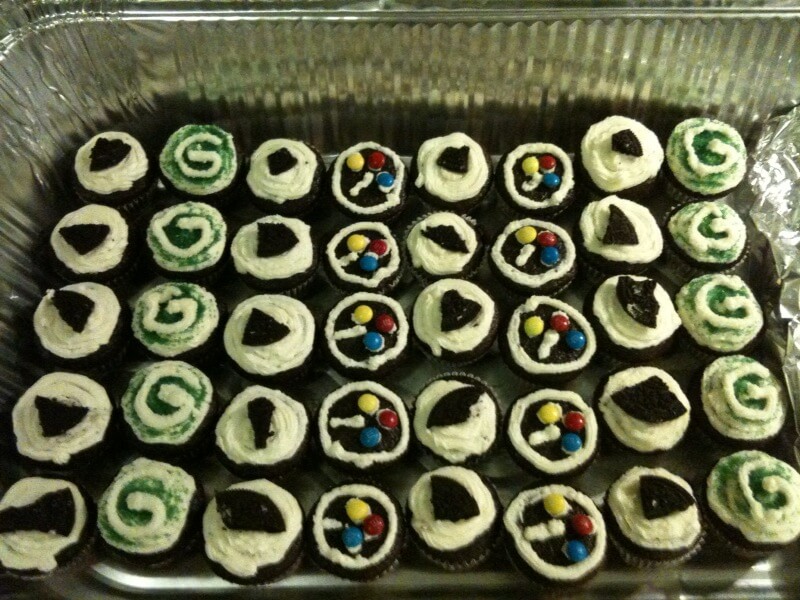I could really care less about the Super Bowl and either team playing (especially after the Jets lost!), but I’m always up for having a good time with friends, eating like a maniac and baking and decorating cupcakes.
food
Another Great CSA Dish
After we dumped the celery, we arrived home with one of the best CSA bounties we’ve had yet. The week’s share included fingerling potatoes, basil, sweet corn, tomatoes, a pepper, romaine lettuce, cucumbers, onions, and peaches.
Since the beginning of CSA season, we washed an cut all the veggies the day we got them to make storing and cooking easier. But a few weeks ago, we decided that it was best to cook as much as we could that day, too. That way, we’d have lunches to bring to work everyday and (in my case) wouldn’t have to stress about finding time to cook the veggies later in the week. (For a few weeks, I couldn’t escape the mental burden of having veggies in my fridge that needed to be cooked, but couldn’t carve out the time to do so.)
So last Tuesday, we set out to use as many veggies as we could in one cooking session. We made horseradish and chive potato salad. We used this fantastic Epicurious recipe to make capellini with sweet corn, basil, tomatoes, and sugar snap peas. Later in the week, we turned the lettuce and tomatoes into a simple salad, and used the sliced cucumbers for sandwiches with smoked salmon and cream cheese. Mmm…
Celery Blows
…and that’s why everyone, including me, was filling up the CSA swap box with unwanted bunches, yesterday.
I find celery to be a pretty useless veggie. When it comes to raw veggies, it’s at the bottom of my list. And while it gives a nice texture to salads and soups, I see it mainly as filler. I always found that the easiest way to pick out bad/inauthentic Chinese restaurants is by how much celery they use in their dishes. And by “how much,” I mean if they use celery at all.
Despite the Blight, We Got Tomatoes
Pisto: The Best CSA Dish, To Date
I was thrilled that last week’s CSA share included summer squash. It’s one of those vegetables that I often neglect to buy but enjoy every time I eat. Usually I just slice the squash and saute it with olive oil and pepper, but this time I wanted to try something new.
Enter NYT’s “Recipes for Health” series. I’m a big fan because the recipes are generally pretty simple, don’t require a ton of ingredients I don’t already have, and are, well, healthy (in theory). Plus, the series features recipes built around a specific ingredient, which makes searching a cinch. On the summer squash page, the “Pisto Manchego with Eggs” dish caught my eye. I hadn’t heard of pisto before, but according to the recipe, it’s “a savory mixture of summer squash, onions, garlic andВ tomatoesВ usually cooked down until the squash falls apart.”В
That description, plus the fact that it included eggs poached in the pisto, sold me. As it turns out, it was the tastiest dish we’ve made with our CSA veggies yet. The squash, which was tender to begin with, was cooked until it melt-in-your-mouth soft, and the eggs were the perfect, slightly creamy offset to the tart tomato flavor.
 The ingredients: four chopped summer squash, one chopped onion, four minced garlic cloves, one can of tomatoes with the juice set aside.
The ingredients: four chopped summer squash, one chopped onion, four minced garlic cloves, one can of tomatoes with the juice set aside.
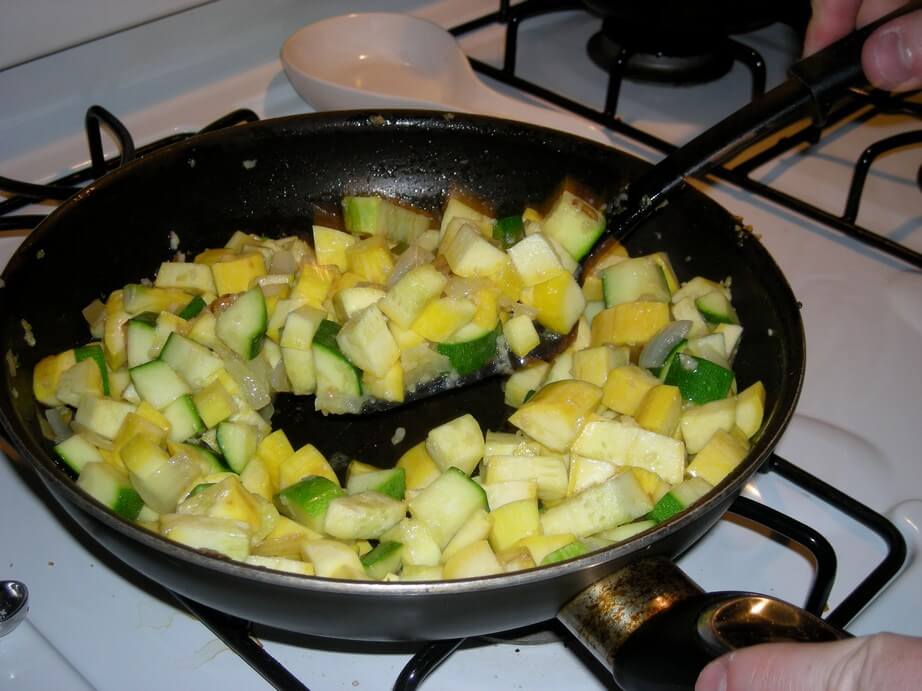 Sauteing the squash and onions
Sauteing the squash and onions
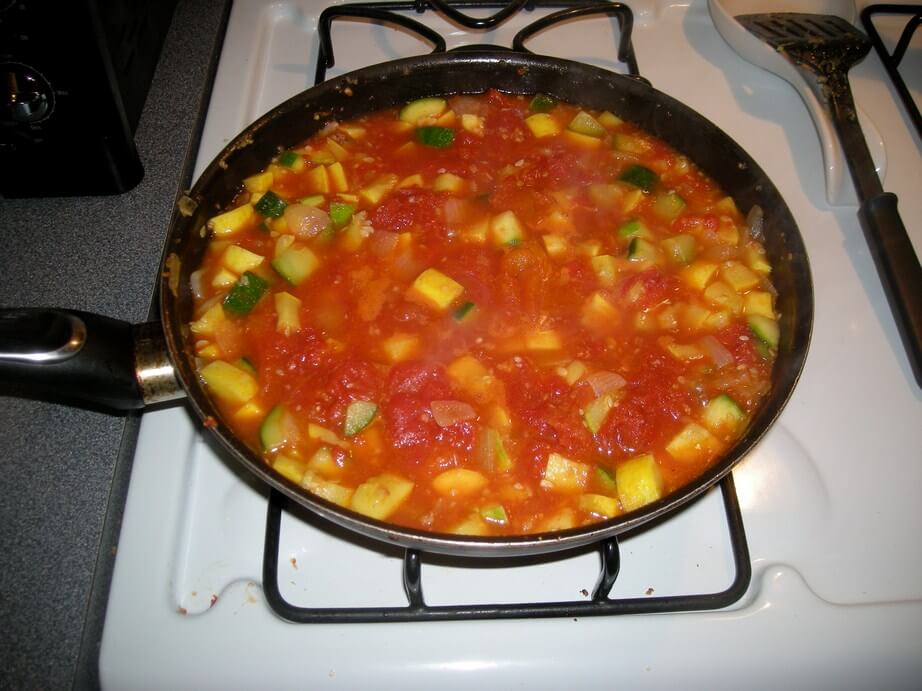 The squash, onions, and tomatoes cooked for 35 minutes.
The squash, onions, and tomatoes cooked for 35 minutes.
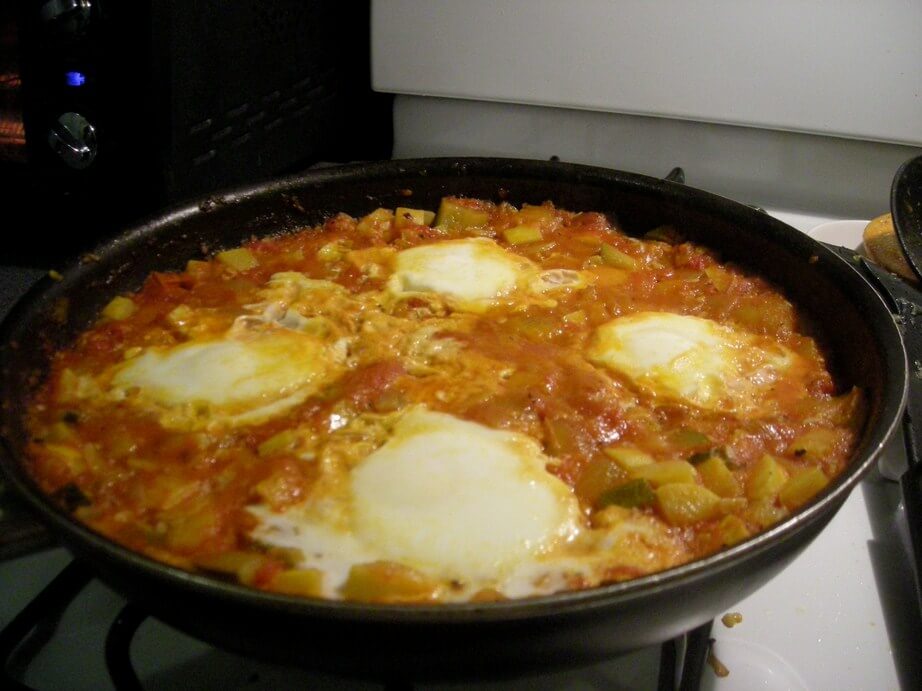 Add four eggs directly into the mix, and Pisto!
Add four eggs directly into the mix, and Pisto!
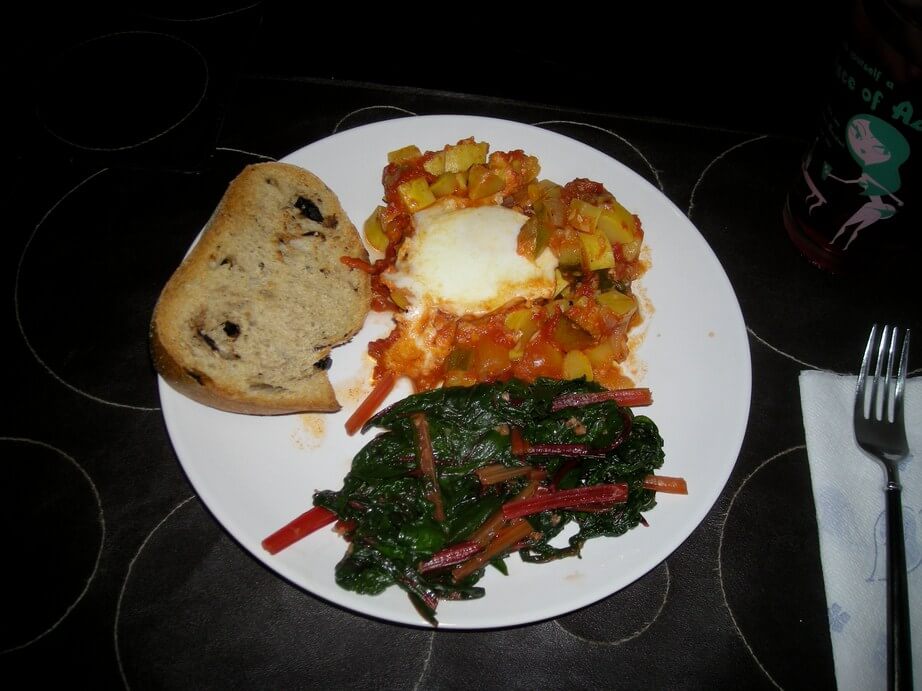 We ate the delicious dishВ with side of crusty rosemary-olive bread and swiss chard (which was good, but not a great accompaniment to the pisto).
We ate the delicious dishВ with side of crusty rosemary-olive bread and swiss chard (which was good, but not a great accompaniment to the pisto).
What I Made with the First CSA Veggies

At this week’s pick-up, I got one head of romaine, one bunch of kale, one bunch of green chard, one bok choy, one bundle of scallions, one bundle of French breakfast radishes, one pot of oregano and thyme, four garlic scapes, two kohlrabis, and a quart of strawberries.
On the first night, I decided to make the kale for dinner, since I had made it before.В I wanted to tackle the garlic scapes, too, mostly because I wasn’t sure how long they’d keep. When I them, I accidentally typed in “garlic scrapes,” but my mistake took me to aВ blog, called the Gorham Garden, that had a post about “garlic scrapes” — which included a recipe for nut-free pesto. (I’m allergic to nuts, so I was very excited to find a pesto recipe that didn’t call for pine nuts or walnuts.) Another quick Google search — this time spelling “scapes” correctly — informed me that garlic scapes are best used in pesto. That solidified it. I decided to make pesto sauce, with the recipe I found on the Gorham Garden blog, and use it on a simple portobello-tomato-ciabatta sandwich with a side of kale for dinner.
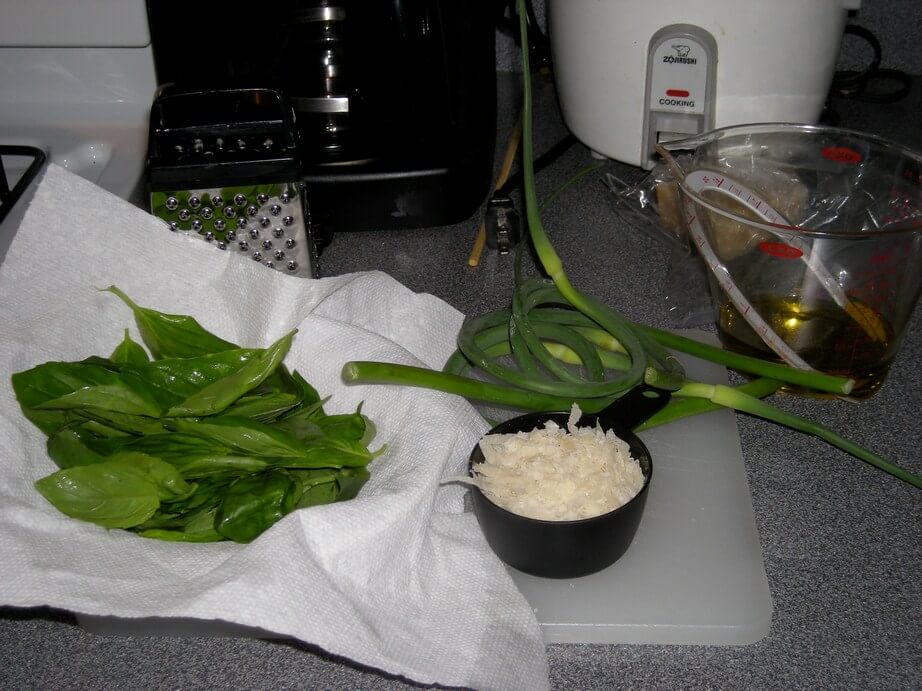
Pesto ingredients: four garlic scapes, basil leaves, 1/4 cup olive oil, 1/2 cup parmigiano reggiano.
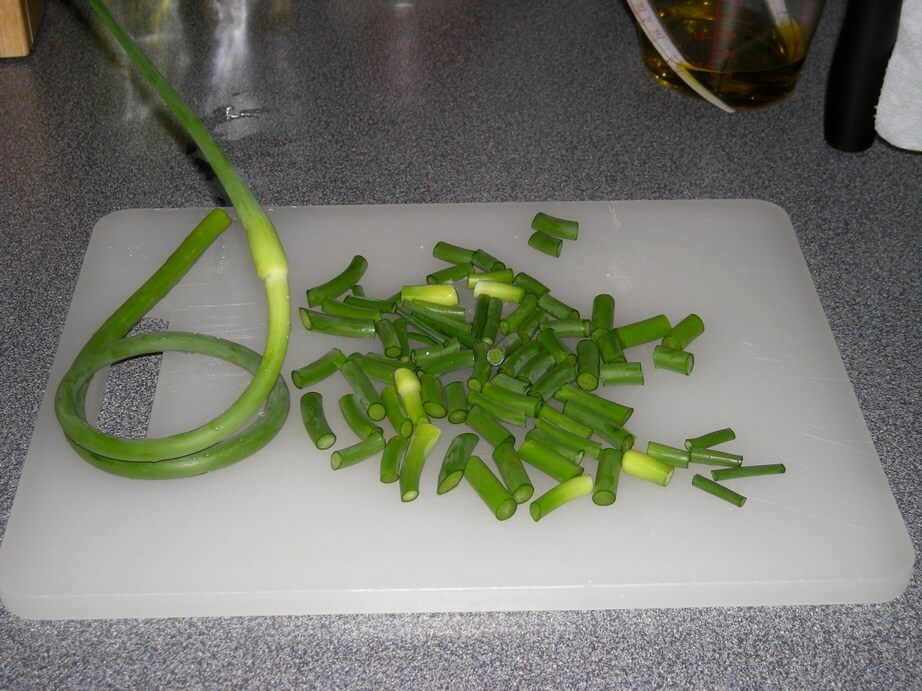
I chopped the scapes into small pieces and pureed them in a food processor. Then, I added the basil, pureed it, put in the oil and cheese, and pureed the mixture again. Here’s a shot of the finished pesto:
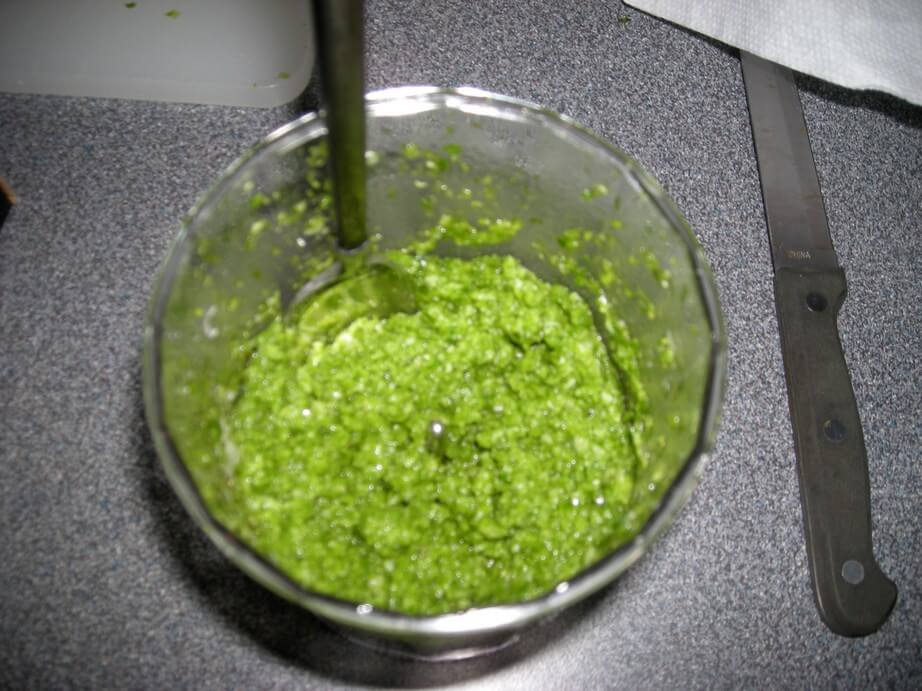
Next, I washed the kale and chopped the leaves without removing the stems. Riffing off this Food Network recipe, I sauteed the kale with one large garlic clove, steamed it for a few minutes, and added a tablespoon of sherry vinegar and a dash of sea salt and pepper.
Here are two shots of the complete meal. The kale was slightly sweet and very tender. The scapes gave the pesto more of a spicy kick than regular pesto has. I was very pleased with my first CSA meal!В
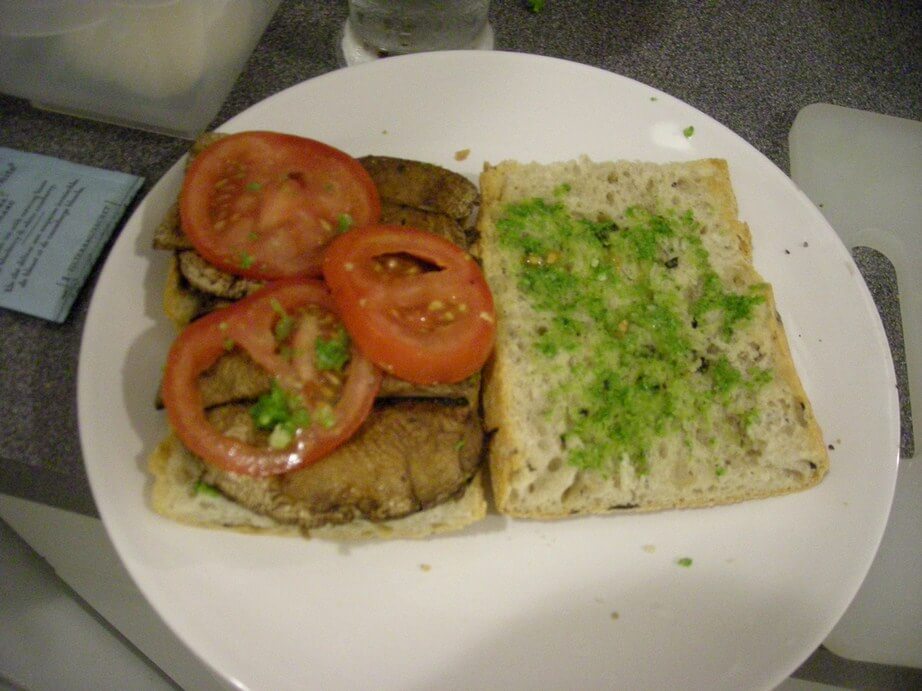
Roasted portobello with sliced tomato and pesto on kalamata olive ciabatta.
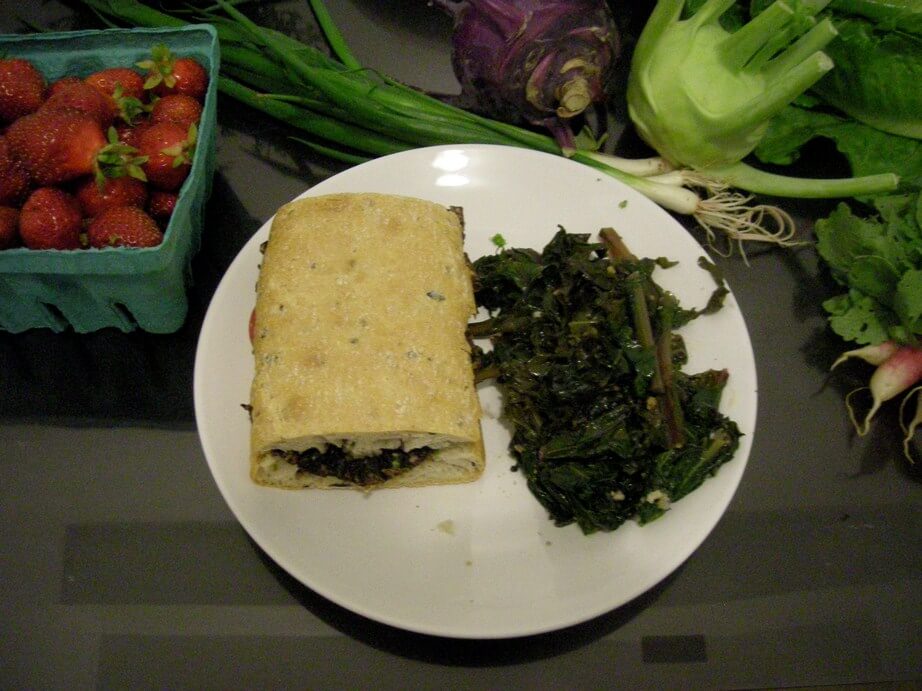
Yesterday, my sister and I decided to use the bok choy in a simple stir fry. (We used this NYT recipe as a guide, but omitted the red pepper and chili paste.) She’s more talented in the kitchen than I am, so she browned the tofu:
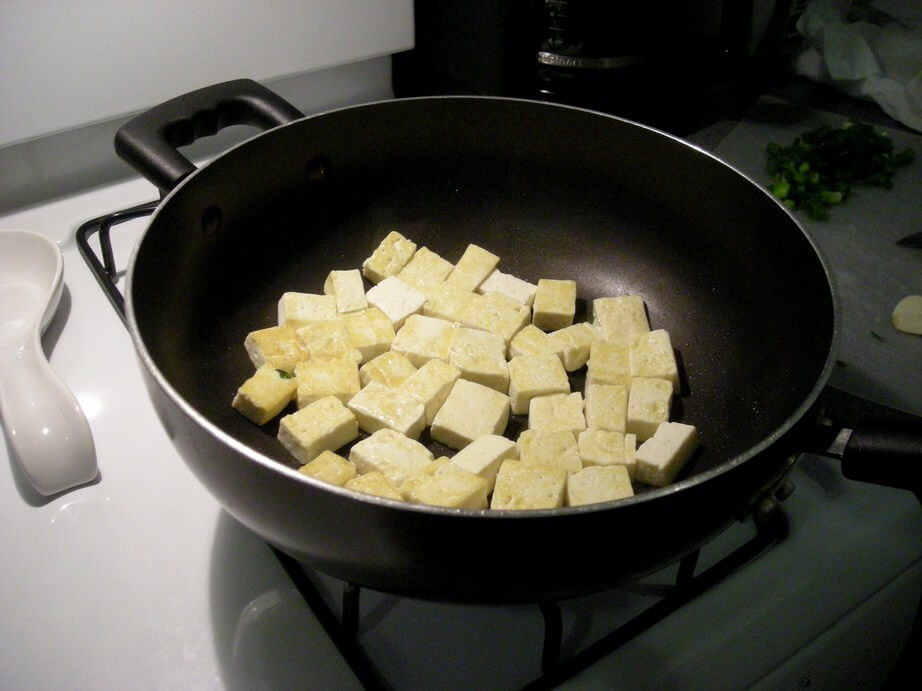
After the tofu was cooked, we threw in some oil, one minced garlic clove, and a teaspoon of grated ginger into the wok. Once the garlic was simmering, we added the chopped bok choy and a bit of water. When most of the water was cooked out, we added the tofu, some soy sauce and sprinkled chopped scallions over the mixture. We served the tofu and bok choy over buckwheat noodles with a few splashes of Sriracha. Mmm…
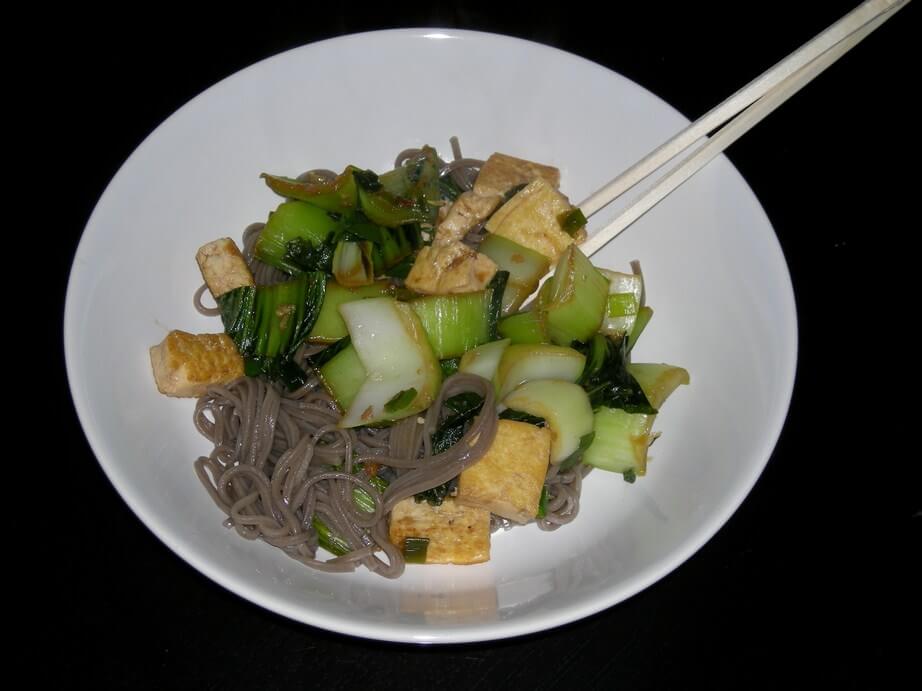
First Washington Heights CSA Pick-Up of the Season
I wanted to join a CSA since I first read about community supported agriculture. The majority of my grocery budget goes to buying produce (mostly organic), but I tend to buy the same fruits and veggies (spinach, arugula, bok choy, mushrooms, bananas, plums, etc.) all the time because they’re what I’m familiar with and they’re usually not too expensive. I’m also not a great cook — I’m constantly stuck in food ruts — and I figured a CSA would force me to learn how to cook new dishes since I’ll have no control over the fruits and veggies I’ll receive. Oh, and it also seemed like a good way to support local, organic farmers.В
After doing a bit of research last fall, I learned that there’s a Washington Heights CSA that distributes veggies in Fort Tryon Park, which is only a few blocks from my apartment. The produce comes from Windflower Farms, a small, organic farm upstate in the Taconic Hills. Joining the CSA was the hard part. Apparently, a glut of people also wanted in, so I was on a waiting list for several months. A few weeks ago, I received an e-mail stating that I was accepted from the waiting list, and I signed up for a vegetable share (22 weeks) and a fruit share (20 weeks).
Yesterday was the season’s first pick-up, so I headed to the distribution site, at New Leaf Cafe, in Fort Tryon. I was surprised to find a rather long line of people also picking up veggies. Apparently, the CSA has quite a few new members, and a volunteer kept reiterating that they’d never had a line before.В
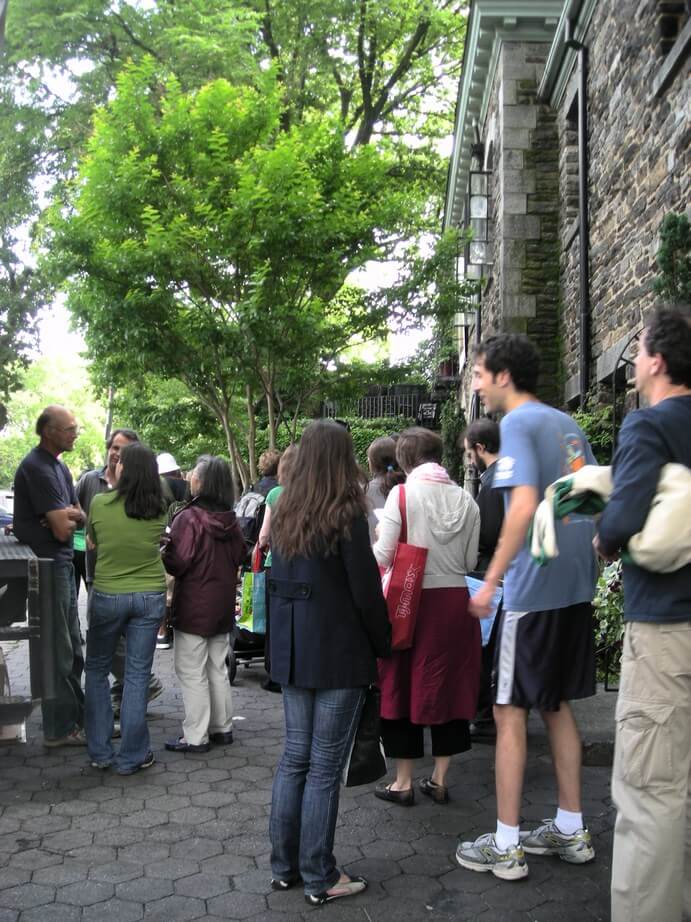
It moved quickly, though, and soon I stood before a row of boxes, each bearing a different veggie. A large chalkboard informed us how many of each were were allotted.В

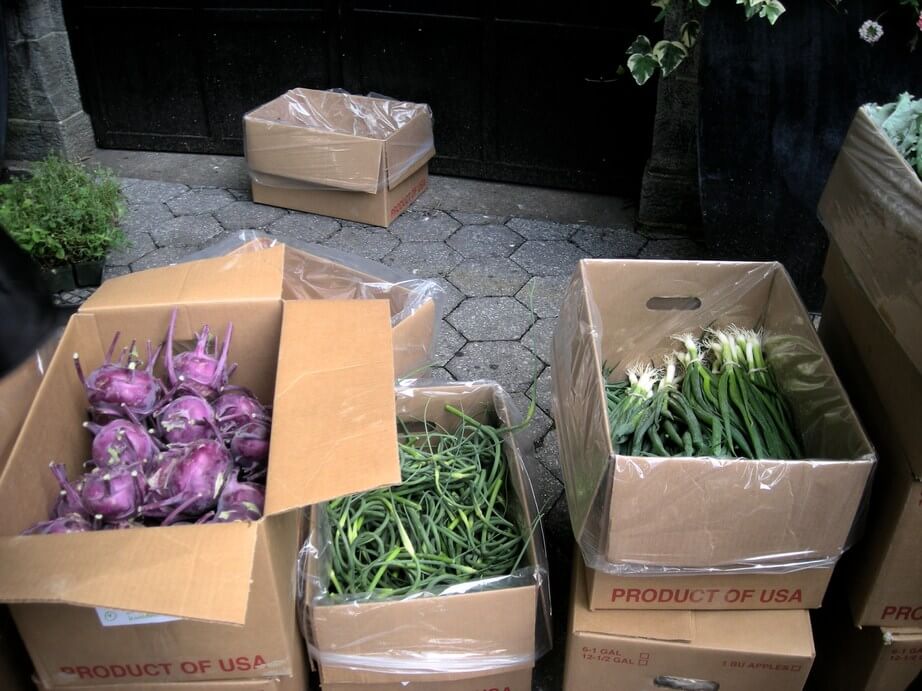
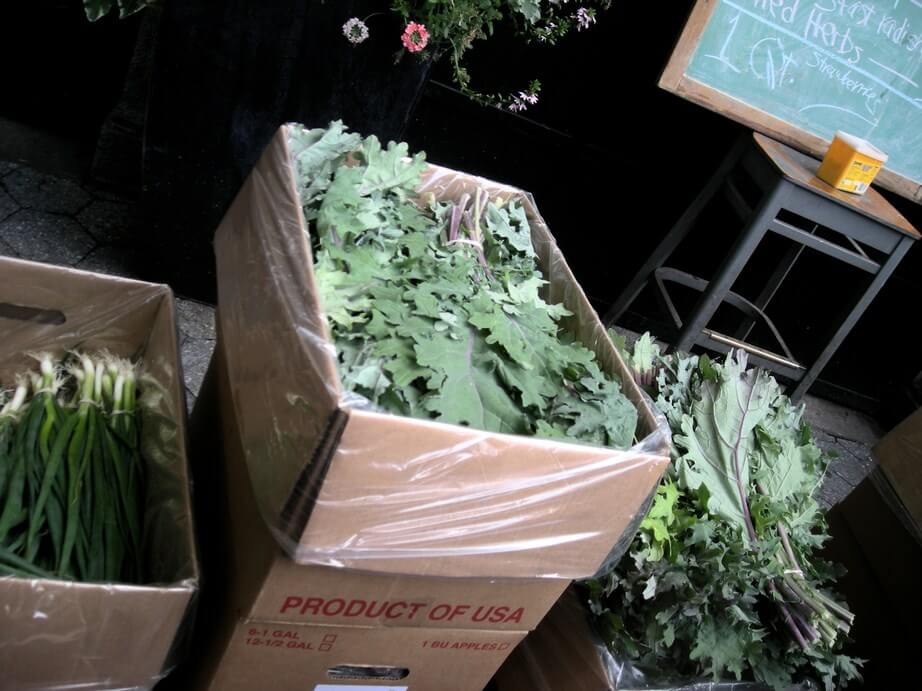
I returned home with this gorgeous array of veggies, fruit, and herbs. Then came the hard part: washing, breaking down, and deciding what to do with all of it.


